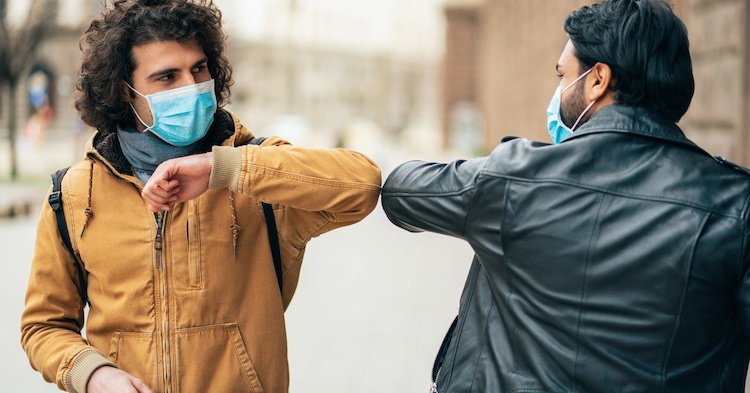As we’re all aware by now, these are unprecedented times—for people, for businesses, for brands. Best practices as we once knew them are being rewritten on the fly, and the amount of collective learning and knowledge sharing happening in the marketing world is staggering, even for an industry that already prided itself on such things.
In recent years, marketers have become laser-focused on personalization within their messaging, right down to the moment in which they’re reaching consumers. The opportunity to personalize still exists but the moments have suddenly changed. And KPIs, like driving consumers in-store for example, are no longer viable since so many stores are closed. So what does the new playbook for marketing in the moment look like? This playbook will evolve over time, but here’s what we know right now.
Instantaneous, seismic changes in foot traffic, device usage
First up, let’s lay some groundwork. We all know consumer behavior has dramatically shifted in recent weeks, but what does that really look like?
Let’s state the obvious up front: Where people are going has changed—and fast. Between Feb. 1 and April 3, airport visits dropped by 72 percent, train station visits plummeted 74 percent, gym traffic declined 81 percent, and bar and restaurant visits sank 86 percent. These declines have continued as more businesses have closed and more stay-at-home orders have been issued. On the flipside, the day after COVID-19 was declared a pandemic (March 12), grocery store visits spiked 46 percent, with another 35 percent spike the following day. But beyond these sorts of bursts in business activity, people in general are staying home or spending their time in open spaces.
Seizing the new moments
So yes, consumer behavior has shifted dramatically—perhaps, permanently. Shifts in consumer behavior have bred new moments, with new challenges for marketers to address. These days, finding the right moment is less about knowing where people are (they’re home, after all) and more about knowing what they’re doing and addressing what they need most now. Fortunately, the dramatic rise in app usage in recent weeks means advertisers have keen insights and access into these activities and how they relate to a consumer’s current mindset. Especially relevant marketing moments in a post-pandemic world include:
- Working from home
- Teaching from home
- Learning from home
- Home fitness
- Streaming content
- Food delivery
- Watching the news
- Cooking
- Video conferencing
- Online banking
- Video gaming
- Enjoying the outdoors
- Mental sanity breaks
- In line at the grocery store
- DIY projects
Seizing new moments requires a new approach to messaging. For example, bans on non-essential travel and point-of-interest visits elevate marketers’ need for digital calls to action like “tune in” and “order online.” For example, one alcohol brand that once asked people to “meet me at the bar for St. Patrick’s Day” instead encouraged customers to “bring the spirit of the bar home.”
It’s also important to speak to this new world’s new moments directly with personalized creative. Based on app usage, consider the activity that a person is undertaking and message accordingly. For example, a CPG ice cream brand might want to personalize according to the moment with messages like:
- “Your reward for teaching common core math. Order now.” (home school moment)
- “Uncertain times call for very certain deliciousness. Order now.” (watching the news moment)
- “At-home bicep workout: spoon to mouth. Order now.” (home fitness moment)
In addition, within your mobile campaigns, be sure to recognize geographies where stay-at-home orders have just gone into effect. You’ll want to approach them differently not only compared to geographies where such orders don’t exist, but also compared to geographies where such orders have been in place for weeks.
Additional mobile moment best practices for today’s reality include the following:
- Shoppable units: Drive a seamless ecommerce experience while consumers aren’t visiting stores.
- Online ordering: Invite online food ordering for those who don’t want to leave the house or visit crowded grocery stores.
- Operating status: Are you open for business? Have your hours been revised? Inform your consumers about these changes.
- Plan for later: In hard times, people need positive experiences to look forward to. While travel is paused, encourage consumers to plan for the future.
- Drive tune-in: Fill at-home quarantine hours with entertainment. Drive streaming and tuning in to TV.
- Get around to it: Inspire people with infinite at-home hours to get around to the projects they’ve been putting off.
- Build your audience: Changes happen by the minute. Drive audience subscriptions to your channels and lists by encouraging them to download your app, join your email list, subscribe to your YouTube channel, or follow you on Facebook or Instagram.
Recognizing new needs
Finally, be sure to recognize that, in a challenged economy, consumers are more inclined to spend on essentials and products and services that soothe their top emotional needs. Tap into the following with your advertising:
- Reassurance: Show your production is still going on.
- Entertainment: Fill idle time and brighten spirits.
- Normalcy: Deliver routine or a consistent experience to give comfort.
- Utility: Make planning, shopping, caretaking and other responsibilities easier to manage.
- Empathy: Communicate that we’re in this together.
Empty shopping shelves indicate consumers’ fear and need for reassurance. Which of the above needs does your product or service address? Use creative messaging to highlight it. By demonstrating that your brand understands the new reality in which today’s consumers are living, you can not only connect with them in today’s unique moments, but also build loyalty and goodwill for years to come, no matter what “new normal” emerges.











